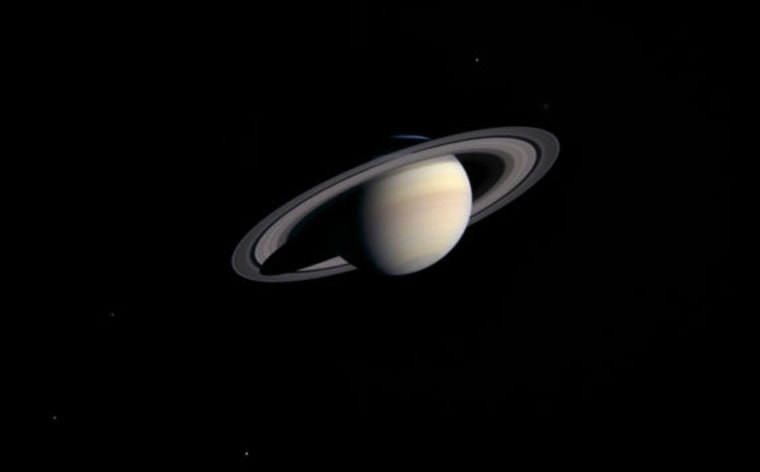The Cassini spacecraft is rapidly approaching Saturn. In July of this year, the huge spacecraft uses its engine to brake into orbit around the ringed world.
As part of that mission, the European Space Agency Huygens probe will float to the surface of Saturn's largest moon, Titan, in January 2005.
From a remote outpost on the summit of Hawaii's dormant Mauna Kea volcano, astronomers at the W. M. Keck Observatory have been on Titan watch. Meanwhile, there is on-going work to blueprint future, on-the-spot exploration of the enigmatic moon.
Snapshots capture changing clouds
The Keck Observatory Titan Monitoring Project is a cooperative effort between observatory staff and visiting astronomers, intended to further our understanding of Titan's surface and atmosphere by acquiring frequent, high-resolution snapshots of Titan's changing clouds.
This project has three primary goals: to determine the typical size, frequency, and lifetime of Titan's south polar methane clouds; to search for unusual methane storm activity at lower latitudes; and compile the most detailed global map of Titan's surface possible, for use in planning observations by the Cassini/Huygens spacecraft mission.
Vision mission
The Cassini mission and Huygens probe, now en route to the Saturn system, will return data on Titan’s surface state, atmospheric composition, and chemical processes.
NASA has asked scientists to begin blueprinting visionary space missions, in the decade beyond 2012.
One of those flagship-class spacecraft under review is identified as the Titan Explorer. A follow-on Titan Explorer mission might include a mobile platform capable of obtaining samples and conducting a variety of experiments at multiple locations on the Saturnian moon.
The atmosphere and surface of Titan are inferred to be rich in organic materials and may, therefore, provide a natural environment for studying organic chemistry in ways unattainable in terrestrial laboratories.
Understanding the pathways of organic synthesis on Titan might yield important insights into the evolution of prebiotic chemistry that led to the origin of life on Earth.
